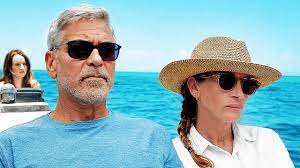
Actor
George Raft has been a slowly acquired taste for me.
In my initial exposures to Raft I found him rather wooden. Back in
2013 I wrote "Try as I might, I just can't warm up to Raft," but I kept watching his movies, encouraged by the memory that he was one of my paternal grandmother's favorite actors, along with Clark Gable.
I share my grandmother's love for Gable and figured if I gave Raft a chance I might see why he also appealed to her, and that has proven to be the case. Having now seen at least 20 Raft films I've come to appreciate his performances in films such as
SPAWN OF THE NORTH (1938),
EACH DAWN I DIE (1939), and
NOCTURNE (1946).
I enjoyed Neibaur's book
FRANK SINATRA ON THE BIG SCREEN last summer and found his Raft book similarly insightful. He immediately tackles the issue of Raft's screen persona in his introduction, writing "Raft's economy of movement and low key verbal delivery have been unfairly defined as wooden and limited, when...given the right script and director, his style was nuanced and effective...," and continuing "...post-war crime dramas...were good for Raft's style of acting, and his best films in this field...hold up quite well."
I completely agree. Raft may not be my favorite actor, but over time I've come to appreciate his unique screen presence.
THE GEORGE RAFT FILMS focuses on exactly what the title says, the actor's body of work, weaving biographical information into the film discussions. The opening of the book briefly sketches Raft's background and his initial bit parts, then provides a film-by-film look from NIGHT AFTER NIGHT (1932) through A BULLET FOR JOEY (1955); the final chapter on SOME LIKE IT HOT (1959) also goes into Raft's final film appearances. Raft spent half a century making movies; his last film was the year he died, 1980.
Each chapter lists standard FILMS OF... type factual information such as the cast and main production staff, along with additional helpful details such as running time. Many of us have become used to looking these kinds of things up on IMDb, but I find having information like this at one's fingertips in a book handy in conjunction with reading about or researching a film; it's also useful if one is using the book as a companion to viewing the actor's movies.
After the factual rundown Neibaur then places each film in the context of Raft's career, discussing production background, plot, and critical reception along with providing the author's critique of the overall film and Raft's performance.
Although I learned quite a bit about Raft's life through the book, I particularly enjoyed the author's reactions and personal insights into the films. A good example is his review of one of my favorite Raft films, NOCTURNE, where I enjoyed comparing our responses; Neibaur mentions how well the film's more lighthearted aspects work, along with the pleasure of watching its location footage of Los Angeles, which I noted in my own review was "one of the film's best aspects." Neibaur also comments that NOCTURNE allowed Raft to play a good guy, which was the actor's preference.
I found it particularly interesting that Raft believed playing heavies wasn't right for his screen persona and acting skill set. As Neibaur discusses, Raft is somewhat notorious for having turned down roles in highly regarded films like HIGH SIERRA (1941) which had the potential to drive him toward bigger stardom; instead of playing another "hood," Raft went on suspension.
While some criticize Raft for that type of career choice, as I've gotten to know Raft's work I find the productions he did choose rather interesting. It admittedly helps that I'm fond of "B" films, including Lippert productions, but despite my initial hesitations regarding Raft, I've found myself consistently curious to see his movies.
Along with reading about films I've already seen, I particularly enjoyed learning about films which I have yet to watch for the first time. A benefit of reading the book is that it's prompted me to pull DVDs such as LOAN SHARK (1952) off my shelf to watch soon; Neibaur describes LOAN SHARK as "very effective" and "consistently compelling." Sold!
I not only learned about Raft's career and films from THE GEORGE RAFT FILMS, but I happily also now have a list of movies I'd really like to watch. I recommend the book for anyone interested in George Raft.
The print copy of THE GEORGE RAFT FILMS is 358 pages including bibliography and index. There are also a number of well-chosen black and white photographs.
Neibaur is nothing if not prolific, and he also has a new book out from McFarland, THE FILMS OF JUDY GARLAND, which I plan to review at a future date.
Thanks to Bear Manor Media and James L. Neibaur for providing an e-copy of this book for review.
 FRANCIS JOINS THE WACS (1954) is the fifth movie in the seven-film Francis the Talking Mule Blu-ray collection from Kino Lorber.
FRANCIS JOINS THE WACS (1954) is the fifth movie in the seven-film Francis the Talking Mule Blu-ray collection from Kino Lorber.








































.JPG)

.JPG)

.JPG)
.JPG)







